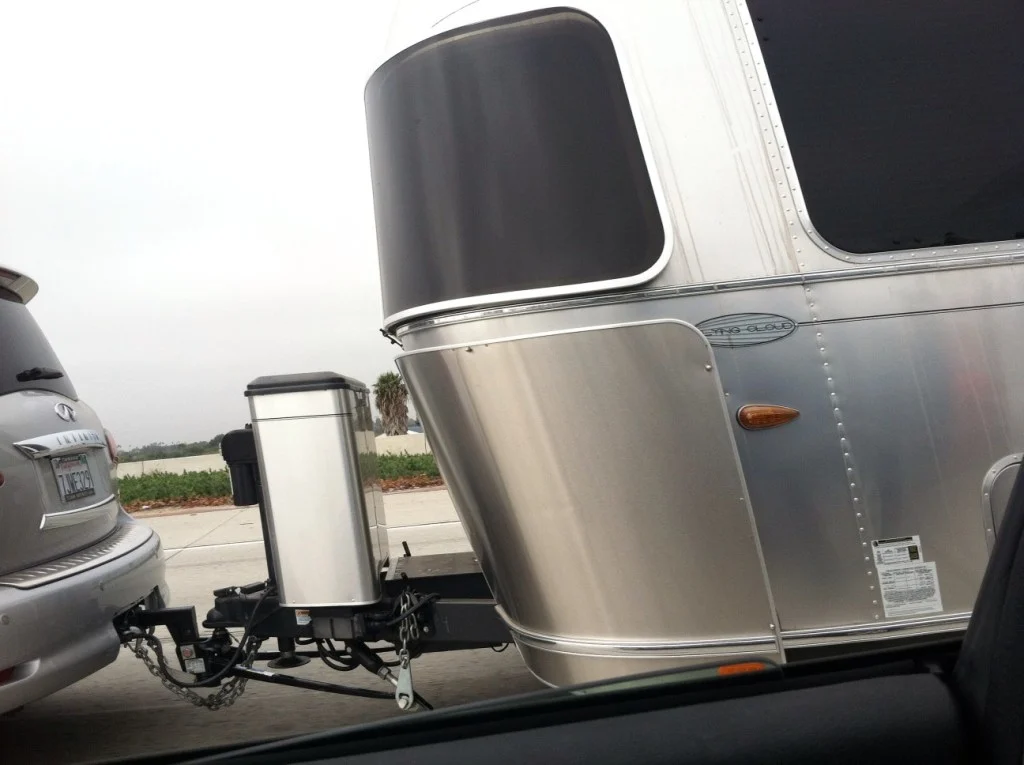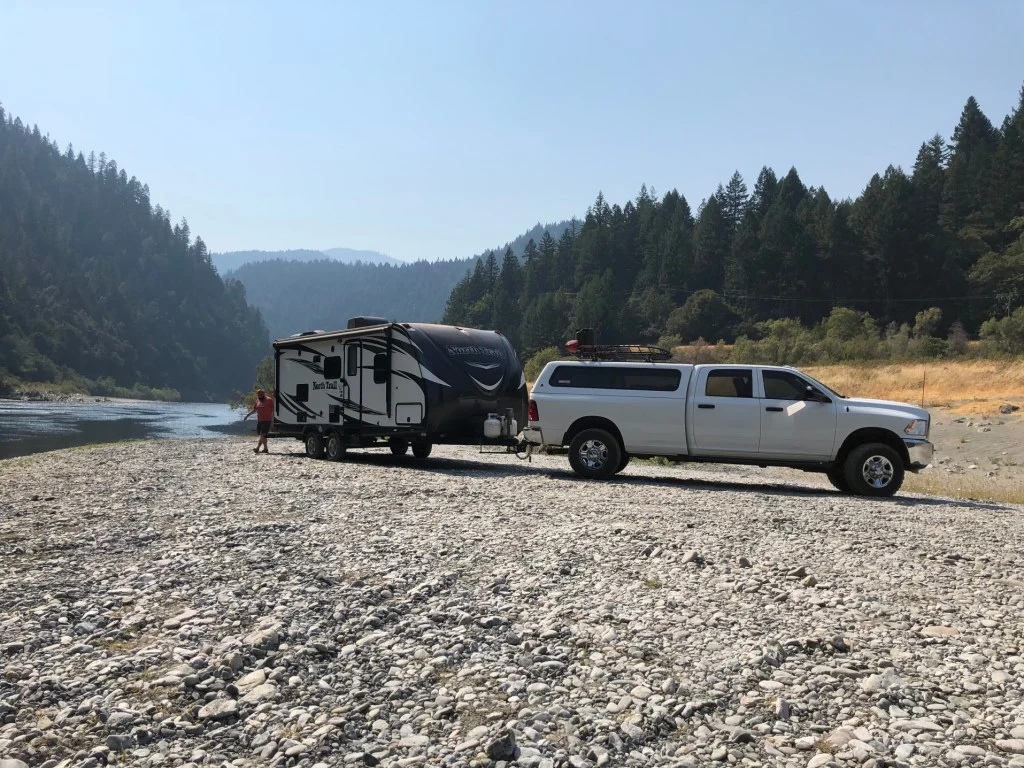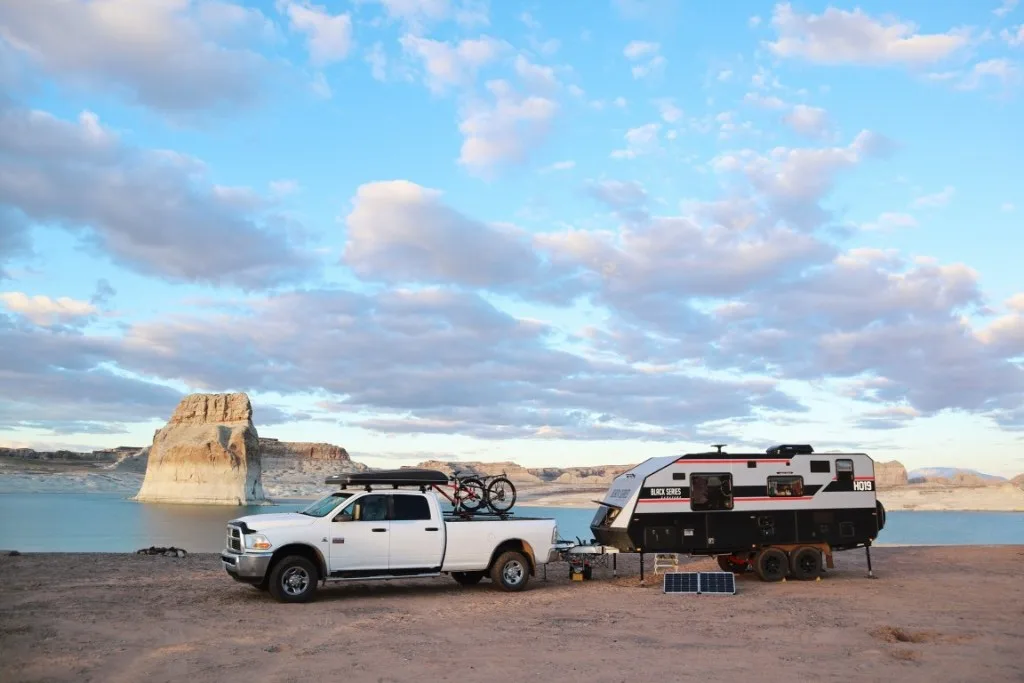What is an RV Sway Bar?
One of the best ways to improve your rig’s handling is to add an RV sway bar.
Driving a large motorhome or travel trailer comes with a big learning curve. Add in bumpy roads or high winds, and it’s enough to stress out even an experienced driver. Trust us. We speak from experience!
Let’s dig into what RV sway bars are and why you might want one.
What is an RV Sway Bar?
An RV sway bar is an optional add-on for your RV’s suspension system. There are several types of sway bars, but they all have the same job at their core. To reduce sway when driving your RV.
A sway bar helps reduce tilt during turning. It also helps smooth the ride when traveling on bumpy roads or in windy conditions. Keep reading to find out exactly how they work, and pick the right sway bar for your rig.
How Do Sway Bars Work?
When your RV starts to sway, the suspension experiences a twisting force. The wheels may no longer be level, which contributes to the rocking motion every RVer hates. The sway bar resists this force to help level out the wheels and reduce sway.
What Causes Sway?
One common cause of sway is from turning. As your RV turns, the vehicle’s weight shifts to one side. For example, when you turn right, the weight shifts to the right. You can usually control this type of sway pretty easily by slowing down your turns and taking them nice and wide.
Another common cause of sway is much harder to mitigate. Wind. Wind or drafts from passing semis can cause sway for both motorhomes and trailers. You might also experience sway if traveling on a bumpy or curvy road.

How to Prevent Sway
There are a few ways to prevent sway. These are critical for ensuring you arrive safely at your destination.
Don’t Drive in Bad Weather
Bad weather is a recipe for disaster in an RV. Even if you arrive safely at your destination, the journey will be miserable and stressful. Trust us, we’ve experienced awful weather before, and it isn’t something we want to repeat.
To avoid poor weather, try to give yourself a bit of a buffer for when you need to arrive at your next destination. Check out the weather along your route before leaving and make a plan for places you could stop if necessary.
Load Your RV Properly
Another important thing is to load your RV properly. If you have a trailer, you need to distribute the weight so that around 60% is in the front half. Also, don’t overload your RV or trailer either.
If you exceed the maximum weight, you’ll need to find out how to trim the excess.

Slow Down
Driving slower is another straightforward way to cut down on sway. When you are driving slowly, you are also more easily able to correct for sway that occurs.
We recommend keeping things to 55-60 miles per hour or the smoothest ride. Bonus points for improving your fuel economy while you’re at it!
Use Sway Bars
Since this article is about RV sway bars, we couldn’t forget this one! Using a sway bar will really help reduce sway. We were skeptical before installing our sway bar. After all, they are expensive! We noticed the difference immediately, though! No more white knuckle driving for us.
Use a Weight Distribution Hitch/System
Loading your trailer properly can help cut down on sway. If you want to take it one step further, you can also add a weight-distribution hitch. This type of hitch distributes the weight more evenly on your trailer and tow vehicle axles. More even weight distribution is going to help you have a smoother ride.
Safety Talk: If you have the right towing gear, the correct tow vehicle, and use common sense, towing can be safe and get you where you want to go. Are pull behind RVs dangerous?

Who Needs an RV Sway Bar
Like I mentioned before, we weren’t sure if an RV sway bar was worth the price. However, after yet another white knuckle drive in heavy crosswinds, we decided we might as well give it a shot. To say it was a game-changer would be an understatement.
Now that we have the sway bar, driving is so much less stressful (and it’s safer too!) We feel strongly that every RVer should invest in an RV sway bar. It will protect you and those around you. It also makes the drive much more enjoyable.
Since RVers spend hours on the road, having a more relaxing driving experience is definitely worth it. You’ll probably be thrilled with the addition of a sway bar if you’re anything like us.
Types of RV Sway Bars
There are a few types of sway bars to choose from. The choice will depend on your rig and what you hope to accomplish with your RV sway bar. Keep reading for a quick overview of the differences.
Suspension Sway Bars
Suspension sway bars are a solid choice for large motorhomes. A suspension sway bar is a U-shaped piece of metal that links your front wheels. The sway bar controls your wheel’s suspension to help keep your RV more aligned.
Friction Sway Control Bars
A friction sway control bar is best for small trailers. It attaches to your trailer to help minimize sway once it has already happened (instead of preventing sway). It works by adding friction to the trailer as it sways to bring things back into alignment slowly.
For larger trailers, you might actually need more than one friction sway control bar. One major downside is that you have to take off the sway bar before backing up your trailer. Since many RV parks have back-in spaces, this is a major drawback. The good news is, these are a more affordable sway bar option.
Dual Cam Sway Control Systems
Unlike a friction sway control system, dual cam sway bars are preventative. That means they help prevent sway before it happens. This makes them a superior option for many RVers and leads to a less stressful driving experience.
Dual cam sway bars work with a curved spring bar. This design helps the bar move quickly back into place to keep your trailer aligned before sway happens.
Although dual cam RV sway bars are more expensive, they are the best choice for regular RVers. If you are on the road often or have a large rig, the extra money is worth it.

RV Sway Bars For an Easier Ride
Adding an RV sway bar is a simple way to make your RV experience much more enjoyable and safer. We could install our new sway bar ourselves, and the driving experience has been so much better ever since!
If you RV regularly, you will definitely benefit from adding a sway bar. To maximize safety and smooth your ride even more, try some of our tips to reduce sway. You’ll notice a difference almost right away!
Discover the Best Free Camping Across the USA
To be honest with you, we hate paying for camping. There are so many free campsites in America (with complete privacy).
You should give it a try!
As a matter of fact, these free campsites are yours. Every time you pay federal taxes, you’re contributing to these lands.
Become a FREE CAMPING INSIDER and join the 100,000 campers who love to score the best site!
We’ll send you the 50 Best Free Campsites in the USA (one per state). Access the list by submitting your email below:
Why didn’t you include pictures of each type of sway bar in your article?